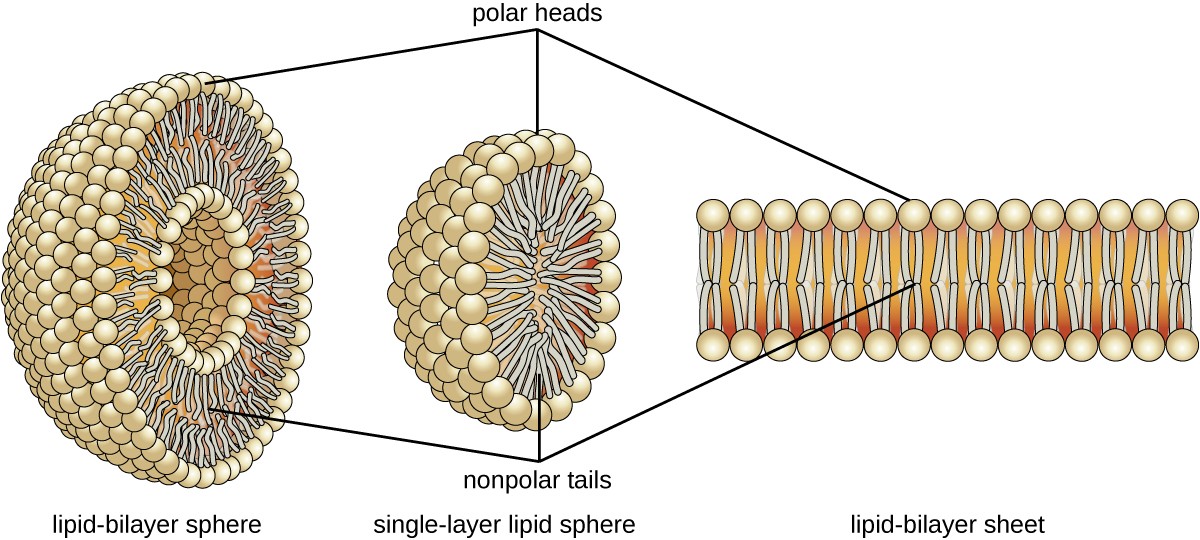lipids

BIOMEDICAL IMPORTANCE
- The lipids are a heterogeneous group of compounds, including fats, oils, steroids, waxes, and related compounds, that are related more by their physical than by their chemical properties.
- Lipids have the common property of being:
- relatively insoluble in water .
- soluble in non polar solvent such as either and chloroform .
- Lipids are important dietary constituents because:
- high energy value .
- fat soluble vitamin ( A,D,E,K ) .
- essential fatty acids .
Functions of lipids :
- Fat is stored in adipose tissue, where it also serves as a thermal insulator in the subcutaneous tissues and around a certain organ.
- nonpolar lipids act as electrical insulators ( myelinated nerve).
- lipoprotein serve as a mean transporting lipids in the blood.
Biomedical Problems that are associated with lipids :
- diabetes mellitus
- obesity
- atherosclerosis .
Lipids are classified as simple or complex :
- Simple lipids
- Complex lipids
- Precursor and derived lipids
1. Simple lipids:
- Fats: Esters of fatty acids with glycerol. Oils are fats in the liquid state.
- Waxes: Esters of fatty acids with higher molecular weight monohydric alcohols.
2. Complex lipids:
- Esters of fatty acids containing groups in addition to alcohol and a fatty acid.
- Phospholipids: Lipids containing, in addition to fatty acids and an alcohol, a phosphoric acid residue. They frequently have nitrogen-containing bases and other substituents, eg, in glycerophospholipids the alcohol is glycerol and in sphingophospholipids the alcohol is sphingosine.
- Glycolipids (glycosphingolipids): Lipids containing a fatty acid, sphingosine, and carbohydrate.
- Other complex lipids: Lipids such as sulfolipids and aminolipids. Lipoproteins may also be placed in this category.
3. Precursor and derived lipids:
- These include fatty acids, glycerol, steroids, other alcohols, fatty aldehydes, ketone bodies, hydrocarbons, lipid-soluble vitamins, and hormones.
Fatty acids:
- these are aliphatic carboxylic acids
- occur mainly as esters in natural fats and oils but do occur in the unesterified form as free fatty acids, a transport form found in the plasma.
- that occur in natural fats are usually straight-chain derivatives containing an even number of carbon atoms.
- The carbon atoms adjacent to the carboxyl carbon (Nos. 2, 3, and 4) are also known as the α, β, and γ carbons, respectively, and the terminal methyl carbon is known as the ω or n-carbon.
- Saturated acids end in –anoic (no double bond)
- Unsaturated acids with double bonds end in -enoic.
Unsaturated Fatty Acids Contain One or More Double Bonds
- Monounsaturated (monoterpenoid, monoenoic) acids, containing one double bond.
- Polyunsaturated (polyenoic) acids, containing two or more double bonds.
- Eicosanoids: These compounds, derived from eicosa (20-carbon) polyenoic fatty acids, comprise the prostanoids, leukotrienes (LTs), and lipoxins (LXs). Prostanoids include prostaglandins (PGs), prostacyclins (PGIs), and thromboxanes (TXs).
- Most naturally occurring unsaturated fatty acids have cis double bonds
- Double bonds in naturally occurring unsaturated longchain fatty acids are nearly all in the cis configuration.
- Trans fatty acids are present in certain foods, arising as a by-product of the saturation of fatty acids during hydrogenation, or "hardening," of natural oils in the manufacture of margarine ( increased risk of diseases including cardio-vascular disease and diabetes mellitus).









No comments:
Post a Comment